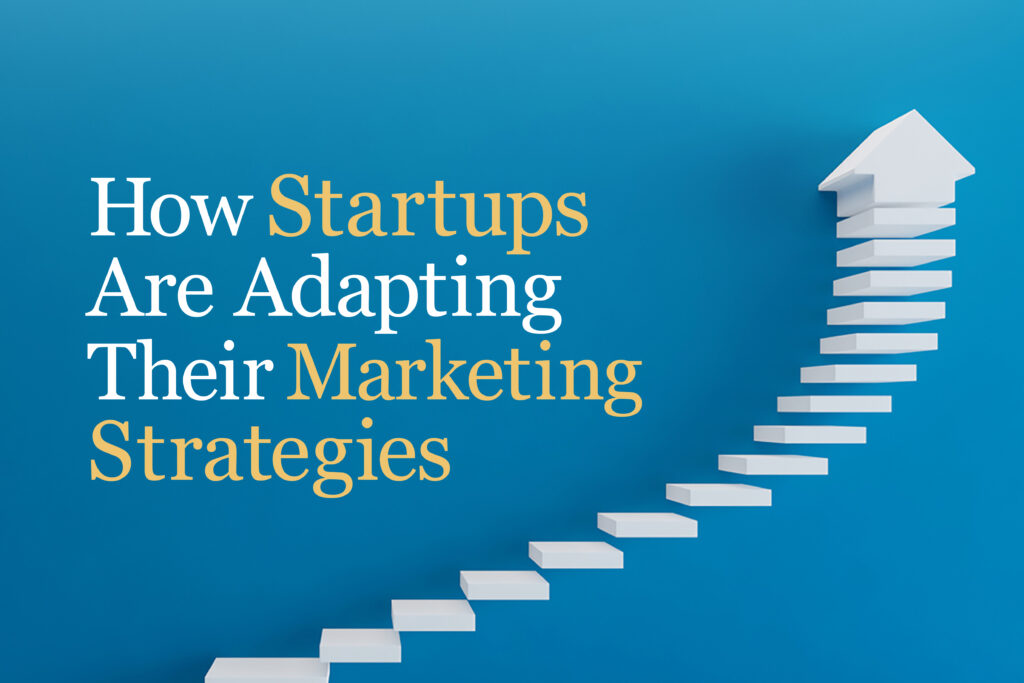Privacy & Digital Media Challenges:
How Startups Are Adapting Their Marketing Strategies

Matt Turner
Chief Financial Officer & CPG Practice Area Lead
July 24, 2023
Changing personal data privacy regulations and digital media costs are having a substantial impact on digital marketing. In a new reality where consumers have more questions about how their data is being used and companies can no longer rely on third-party data to help them find and learn about their customers, businesses are being forced to rethink how they market, and learn to get to know customers in new ways.
As businesses work to find their bearings in a changed digital marketing landscape, we are helping many of our clients to better understand the challenges, capitalize on opportunities, and adapt in ways that help them create competitive advantage. Read on to learn what other businesses are doing — and how you can help your business to more effectively navigate the new reality of digital marketing.
To Understand the New Marketing Reality, Understand the Big Picture
Every company’s marketing strategy should include staying apprised of ongoing privacy and personal data protection changes. Below is a brief rundown of major legislation, trends, and changes.
Apple’s recent iOS updates, which require iPhone users to provide explicit permission for apps to collect and share their data, have dominated recent marketing-focused headlines. But Apple’s updates are only a portion of a much larger trend toward increasing privacy and personal data protection:
- Landmark data privacy laws like the European Union’s General Data Protection Regulation (GDPR) and the California Consumer Privacy Act of 2018 (CCPA) are continuing to have global impacts. On May 22, Meta was fined a record $1.3B for violating EU rules by transferring data to the US from EU Facebook users.
- Legislation continues to proliferate. United Nations data shows that 71% of countries worldwide have enacted legislation to protect privacy and data, and another 9% are drafting such legislation. Legislation is expected to increase sharply across the US throughout 2023.
- Tech-driven changes continue to have an impact. For example:
- Apple’s updates have become progressively more stringent since the initial launch of iOS 14.5 in April 2021. The trend is likely to continue.
- Meta removed options for detailed targeting in sensitive areas relating to “causes, organizations, or public figures that relate to health, race or ethnicity, political affiliation, religion, or sexual orientation” in early 2022.
- Google plans to completely phase out third-party cookies on Chrome by the end of 2024.
The resulting limitations on advertisers’ ability to attribute sales (e.g., via Google Ads, Facebook, Instagram) meant that ad costs rose as tracking became less accurate and return on ad spend (ROAS) harder to measure. While 2022’s poor ad performance means that some costs are coming down, this is still a sea change. The days of blindly handing your ad spend to Google or Meta are over.
Get to Know Your Customers — Really
In the past, businesses could “pay to play,” sitting safely behind a digital wall as algorithms and third-party data helped them identify and get to know the customers most likely to buy their products. That’s no longer possible. Businesses need to start gathering as much first-party data as possible, returning to pre-digital marketing strategies that enable direct engagement with customers (e.g., email lists, gated content, surveys, subscriptions, memberships, contests). Many companies are diversifying ad spend across new marketing channels, looking beyond Facebook, Instagram, Google, and TikTok. Several are shifting to omnichannel strategies that provide a more integrated shopping experience and direct customer interaction across online and brick-and-mortar stores, apps, marketplaces, and more traditional channels like radio, outdoor, and even physical catalogs.
If you’re sticking with a D2C strategy, you should still consider expanding to other channels. For example, our CFOs have seen several D2C clients find success using the old-school method of direct-mail catalogs, using what they’ve learned about their customers over time to do narrow, print-on-demand mailings that get results. The key is getting to know your customers across all channels, seeing how they’re behaving and using that knowledge to understand what they want. In other words, it’s time to find ways to learn what your customers really want and need.
Mismatch Ads and Consumers at Your Peril
For many consumers, lingering privacy concerns are paired with increasing irritation and fatigue. They know that D2C companies have been collecting their data for years, so the backlash is growing when they’re targeted with ads and content that miss the mark — think retirees barraged with information about college savings, or college students rolling their eyes at ads pushing retirement savings. The message from consumers: “If we let you collect our data, the least you can do is pay attention to it.”
If you target consumers with content they’re not interested in, the negative impact on their likelihood to buy is far stronger than in the past. Don’t be careless with your customer data. Be strategic.
Strike a Balance Between Education and Acquisition
In the recent past, investors with a “growth at any cost” mentality gave startups a longer runway before insisting on a path to profitability. Back then, some venture-stage companies looking to get a leg up could invest in expensive brand campaigns focused on cultivating brand awareness and education. Nowadays, investors are likely to view those types of investments as misguided.
Founders are in a tough spot. The amazing salespeople they hire to market their products can be very convincing in arguing for brand spend budget. That’s where Propeller Industries’ finance professionals can step in and partner with clients to gauge what level of spend is viable at their growth stage. Companies at the venture stage generally need to focus on conversion. Sure, you can pay Amazon or Google Ads to push you to the top of search results, but you need to ensure that feeding the funnel converts to tangible sales results.
Today’s founders are shifting how they’re thinking about acquisition spend, being more mindful of fixed costs like team member salaries and increasing focus on efficiency and profitability. Big investments in brand spend must lead to customer acquisition and sales — not just increased brand awareness.
Make Sure Attribution Math Adds Up — and Try Less Granular Metrics
Businesses often use attribution to measure how marketing tactics and subsequent customer interactions contribute to sales and other goals. The problem is that it’s difficult to accurately assess where each sale comes from, and every marketing channel wants to claim that sale to prove its value. Can you really know that a sale was attributed to last-touch versus feeding the funnel? The resulting confusion and overlap often result in attributions adding up to well over 100%.
If you’re using an outsourced agency for marketing, hold them to task on getting the math right. If the sum of the parts don’t equal the whole, they’ve got some investigating to do. It’s also worthwhile to consider approaches that provide a more holistic analysis of what you’re doing well and where improvements are needed. We often encourage clients to consider using less granular metrics that can more accurately measure the ROI of their ad spend.
Remember: Promo Codes Are Not a Long-Term Pricing Strategy
Startups often use discounts or promo codes to entice consumers to try their products. For entry-level products, this can be a valid strategy — for a while. But businesses must be careful, because these practices can educate consumers that they never have to pay full price. The best-case scenario is that you’ve trained consumers to purchase when a new product launches, because they’re afraid of missing out on the deal (and the product). The more likely scenario is brand erosion and price erosion, which can be very difficult to come back from.
You can’t put the genie back in the bottle. Even in today’s inflationary environment, your prices are likely to come down over time, so it’s crucial to understand and manage that to keep margin as you scale. You need to know where you want to end up to determine where you need to begin. It can work to have products on perpetual discount, but only if you start in the right place.
Get the Right Guidance to Get Back on Track
Are you looking for CFO services that can help balance your overall operational spend, understand the investor and lender lens, and support your growth strategy? Let’s talk. Propeller Industries’ services extend well beyond finance and accounting to include strategic guidance based on robust knowledge of current trends and across our client base. You can count on our highly experienced team members to provide valuable insight, guidance, and support customized to your needs and goals. Don’t just get your bearings — make a plan to thrive.



